#national oceanic and atmospheric administration
Explore tagged Tumblr posts
Text









Reminder: the companies and political entities pushing Project 2025 have addresses and go out to lunch a lot and should never eat a spitless meal for the rest of their lives.
Practice bagpipes outside their secure compounds.
Follow them around ringing a bell wherever they go.
If they are going to be farcically evil, be Animaniacally good. Be the definition of chaotic justice.
Also, vote. It might just kick the ball down the road a bit, but that gives people more time to organize a concerted resistance (in no way on any social media platform) to the fascist creep happening in America. It is possible to take this country from the bastards who control it, it will take work, effort, and occasionally going offline and talking to humans though.
#project 2025#accuweather#cartoonishly evil villains#christofascists#noaa#national oceanic and atmospheric administration#weather#meterology#corporate greed#corporate grifts#eat the rich#us politics#vote blue
36K notes
·
View notes
Text
Ok, y’all. I just want it to be understood how important the National Oceanic and Atmospheric Administration (NOAA) is.
Tampering with NOAA would have more impacts than just the main one I've heard - privatization of weather tracking. Of course it would be catastrophic. That means their weather forecasts, guidance, and warnings would not be available for free. Weather is going to go subscription based if this happens, I bet. This undoubtedly would cause the most immediate impact on our daily lives.
Before long, however, more will come.
NOAA also administers the Coastal Zone Management Act. Under this act are the National Estuarine Research Reserves (NERRs), National Coastal Management Program (CZM), and the Coastal and Estuarine Land Conservation Program (CELCP).
There are 30 reserves established totalling 1.3 million acres. More are on the way.
No, this isn’t just our oceans! This impacts our freshwater coasts of the Great Lakes.
Grants and funding for institutions, including the University of Michigan. They manage the Science Collaborative, which funds research and exchanges to address coastal management needs of all 30 reserves or projects in collaboration with them.
Blending new technologies with indigenous knowledge with regards to management of wetlands and estuaries, strengthen food and economic stability, water quality, coral reefs, and resilience against climate change (ie. Ola i ka Loʻi Wai, Hawai’i)
Restore ownership of indigenous ancestral lands (ie. Conservation of Cape Foulweather Headland, Oregon)
Identify for underwater archaeological sites for research and surveys, create a draft tribal climate action plan (ie. Penobscot Nation’s involvement in the Northeast Regional Ocean Council, Maine)
Work with each participating state (regarding the CZM, as it’s voluntary to participate) to address challenges along their coastlines. Maybe reach out to your representatives to see why they’re not involved - looking at you, Alaska!
Population enhancement of coral reefs, manage the Coral Reef Information System, minimize negative impacts of fishing on reefs, mitigate impacts of land-based pollution on coral reefs (Coral Reef Conservation Program)
And much, much more. I’ll note that the aspects of the projects I highlighted above aren’t all they do. These are just a few I want to highlight here. Links can lead you further and I encourage you to take a few minutes to explore.
Another important note: both our oceans and freshwater lakes impact our biggest trade partners!! If dismantled, it would be yet another way that our foolish president will negatively impact our economy and relationships with our most crucial neighbors of Canada and Mexico. NOAA’s efforts also help support one third of the US's commerce. One third.
Here is a map which breaks down the 1.3 BILLION in awards from the Bipartisan Infrastructure Law and Inflation Reduction Act. This includes goals towards economic development, flood, etc…
Oh and they also help with oil spills. No one likes those.
And space weather, geomagnetic storms/solar flares ie. impacts to GPS, power grids.
I really stress people to look at what the agency does overall, as well as what they do in your state. It’s more than just weather. You can find that information here.
Just please understand what we will lose if NOAA is gutted, or even just incapacitated for a long time. We already have little time to lose to slow the impacts of climate change and these are just some of the ways they're leading the charge with that.
It’s vital for us to understand what we will fundamentally lose, and it doesn't end at weather/hurricane predictions.
On a personal note, my dad has put what I can only estimate as hundreds of hours of work into one that was begun before the pandemic. If you can, I’d appreciate it if you’re in that area that you participate when you can, or if anything, donate to the UW Green Bay’s NERR General Fund. He’s also involved with portions of the Lake Superior NERR, so your time, if possible, or a donation if you can, would mean a lot to us.
#noaa#national oceanic and atmospheric administration#nerr#nationa estuarine research reserve#climate change#musk wank.#trump wank.#us government wank.#(ignore those last few tags they're for my own use)#coastal zone management act#national coastal management program#coastal and estuarine land conservation program#hawai'i#hawaii#maine#oregon#alaska#coral reefs
178 notes
·
View notes
Text
#tiktok#donald trump#fuck trump#us politics#president trump#trump#trump administration#us government#trump is the enemy of the people#doge#noaa#national oceanic and atmospheric administration#fuck doge#fuck donald trump#elon musk#department of government efficiency
107 notes
·
View notes
Text
A severe solar storm sparked by an intense flare from the sun could reach "extreme" levels as it bombards Earth, officials with the U.S. National Oceanic and Atmospheric Administration (NOAA) warned on Thursday (Oct. 10). Scientists with NOAA's Space Weather Prediction Group (SWPC) said that a cloud of charged solar material, called a coronal mass ejection, slammed into Earth around midday, triggering a "severe" geomagnetic storm that could impact power grids and GPS and radio communications systems, as well as amplify aurora displays in regions that typically don't see them.
Continue Reading.
#Science#Space#Astronomy#Sol#Solar Storm#Solar Flares#Northern Lights#Auroras#NOAA#National Oceanic and Atmospheric Administration
134 notes
·
View notes
Text
Excrpt from this New York Times story:
The National Weather Service is preparing for the probability that fewer forecast updates will be fine-tuned by specialists, among other cutbacks, because of “severe shortages” of meteorologists and other employees, according to an internal agency document.
An agreement signed on April 10 between the service and the union representing its employees describes several measures that forecasting offices will take to manage the consequences of the Trump administration’s drive to reduce the size of the government. The document also says the service might reduce or suspend the launches of data-gathering weather balloons and eliminate the testing of new forecasting methods and technologies.
More than 500 people this year have already left the National Oceanic and Atmospheric Administration, which oversees the National Weather Service. Nearly 200 of those departures were people who work in weather forecasting offices, which had already faced serious understaffing.
About 300 additional people are expected to leave under the Trump administration’s latest resignation offer, according to two people familiar with the matter, who asked for anonymity because the administration has not officially made agency departure numbers public. Union officials said the departures at NOAA since President Trump took office have far exceeded the typical turnover rate.
The agreement indicates that field offices across the country could face vacancy rates as high as 35 percent, compared with current staffing levels, according to the union. Parts of the agency had already been operating at lower-than-usual staffing levels well before the Trump administration’s cost-cutting efforts.
The document outlines options for cutting back programs and allows the National Weather Service to offer “degraded” services as more meteorologists retire or resign. The cuts would significantly scale back the work of the 122 weather offices nationwide, which collect weather observations and issue warnings during severe weather events.
Representative Zoe Lofgren, the senior Democrat on the House Committee on Science, Space and Technology, which oversees the Weather Service, said the Trump administration was endangering the agency’s lifesaving work. Democrats on the committee provided a copy of the document to The New York Times.
“Chaotic and illegal firings, coercions to resign, reductions in force, and a general obsession with destroying the morale of dedicated public servants have left the National Weather Service’s work force so strained they cannot carry out their duties as they once did,” Ms. Lofgren said in a statement.
21 notes
·
View notes
Text
Jordan Freiman and Tracy J. Wholf at CBS News:
Hundreds of staffers at the National Oceanic and Atmospheric Administration, or NOAA, were laid off Thursday as the Trump administration and its newly-created Department of Government Efficiency, or DOGE, continue slashing the federal workforce. A congressional source told CBS News the layoffs affected 880 NOAA employees. An administration official told CBS News about 5% of the agency's staff was let go, and individuals deemed critical to NOAA's responsibilities, such as National Weather Service meteorologists, were largely spared. A source at the National Weather Service disputed this, however, telling CBS News some meteorologists were impacted, including radar specialists, as well as staff of the Hurricane Hunters crew, which fly airplanes into storms to help forecasters make accurate predications during a hurricane. Laid off staffers who were considered probationary employees received an email Thursday, which read in part, "OPM has advised that '[p]robationary periods are an essential tool for agencies to assess employee performance and manage staffing levels.' (4) In light of that guidance, the Agency finds that you are not fit for continued employment because your ability, knowledge and/or skills do not fit the Agency's current needs." Some 400 employees at the National Weather Service were in a probationary period, a NWS source told CBS News, but it's not clear how many of them were included in the layoffs. Tom DiLiberto, who until Thursday had worked as a climate and weather scientist and public affairs specialist, told CBS News he started as a contractor for NOAA back in 2010, but became a federal employee less than two years ago. His probationary period was set to end on March 13, 2025, two weeks from the day he was terminated. [...] Congressional Democrats had been worried DOGE and billionaire Elon Musk, who is classified as a "special government employee," had their eyes set on NOAA for deep cuts. Former NOAA officials told CBS News earlier this month that current employees had been told to expect budget cuts of 30% and a 50% reduction in staff. Prior to Thursday's cuts, NOAA had about 12,000 staffers across the world, including 6,773 who are scientists and engineers, according to the agency's website.
[...] The NOAA runs the National Weather Service, which issues vital weather warnings — such as hurricane and tornado warnings — and the National Marine Fisheries Service. It is also responsible for monitoring the health of the oceans and the warming of the climate.
The Muskrat’s DOGE hammer took a mass swing at the NOAA and the NWS, which will negatively impact weather forecasting and modeling.
See Also:
AP, via HuffPost: Critical Weather Forecasters Fired In Latest 'Unconscionable' Wave Of DOGE Cuts
Daily Kos: Stormy forecast as DOGE axes weather agency workers
The Guardian: ‘Cruel and thoughtless’: Trump fires hundreds at US climate agency Noaa
Wonkette: DOGE Sh*theads Fire Hundreds From NOAA, Weather Service, Because Weather Is Too Woke
MMFA: National and local meteorologists express alarm as the Trump administration implements Project 2025’s scheme to dismantle NOAA
#NOAA#NWS#National Weather Service#DOGE#Musk Coup#National Oceanic and Atmospheric Administration#Weather#Weather Forecasting
23 notes
·
View notes
Text
As Hurricane Helene approaches Florida, is now a good time to mention that Project 2025 calls for an end to the NOAA and the National Hurricane Center?
#nhc#national hurricane center#noaa#national oceanic and atmospheric administration#project 2025#hurricane Helene#Florida
49 notes
·
View notes
Text

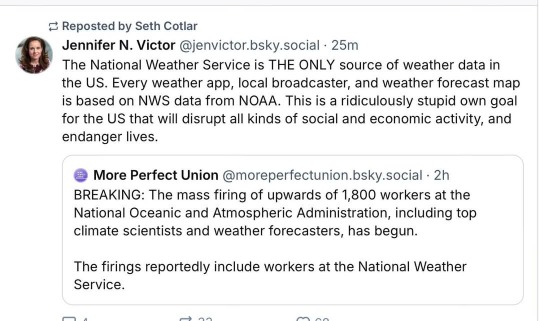
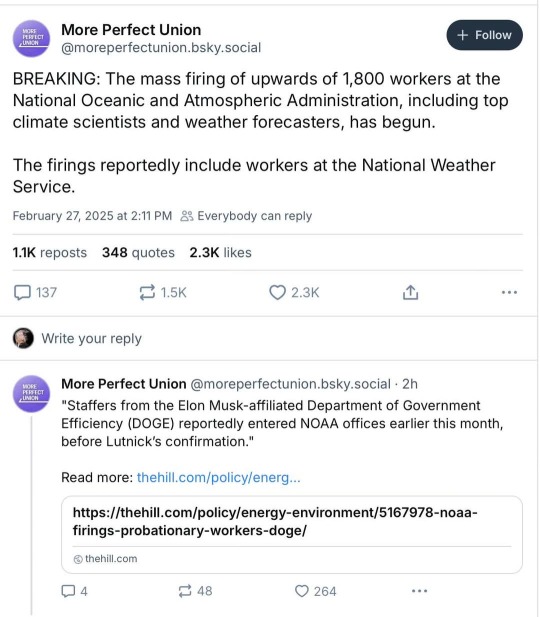
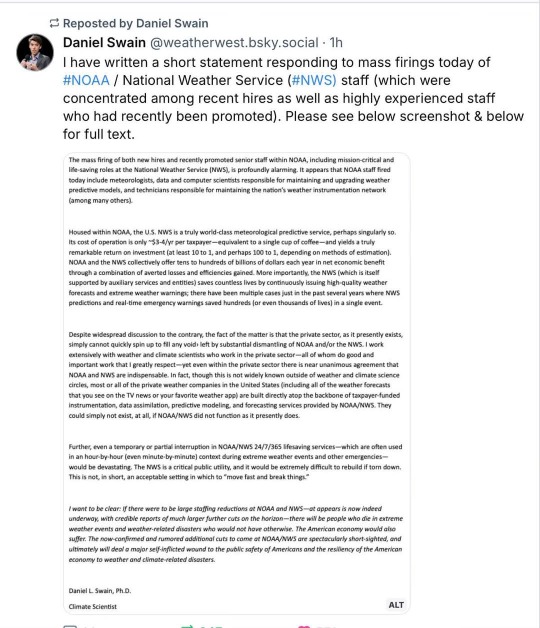


#national oceanic and atmospheric administration#noaa purge#musk coup#trump regime#surely this will work#christofascists
17 notes
·
View notes
Text
Atlantic Tropical Weather Outlook issued by the National Hurricane Center in Miami, FL, USA
2025-05-15, 08:00 EDT

For the North Atlantic...Caribbean Sea and the Gulf of Mexico:
Tropical cyclone formation is not expected during the next 7 days.
&&
Today, May 15, marks the first day of routine issuance of the Atlantic basin Tropical Weather Outlook in 2025. This product describes significant areas of disturbed weather and their potential for tropical cyclone formation during the next seven days. The Tropical Weather Outlook is issued from May 15 through November 30 each year. The issuance times of this product are 2 AM, 8 AM, 2 PM, and 8 PM EDT. After the change to standard time in November, the issuance times are 1 AM, 7 AM, 1 PM, and 7 PM EST.
A Special Tropical Weather Outlook will be issued to provide updates, as necessary, in between the regularly scheduled issuances of the Tropical Weather Outlook. Special Tropical Weather Outlooks will be issued under the same WMO and AWIPS headers as the regular Tropical Weather Outlooks.
A graphical version of the Tropical Weather Outlook is available on the web at: https://www.hurricanes.gov.
$$ Forecaster Pasch
#bot post#meteorology#weather#tropical weather#tropical storm#tropical depression#hurricane#atlantic#atlantic ocean#caribbean#gulf of mexico#noaa#national oceanic and atmospheric administration#nhc#national hurricane center
8 notes
·
View notes
Text
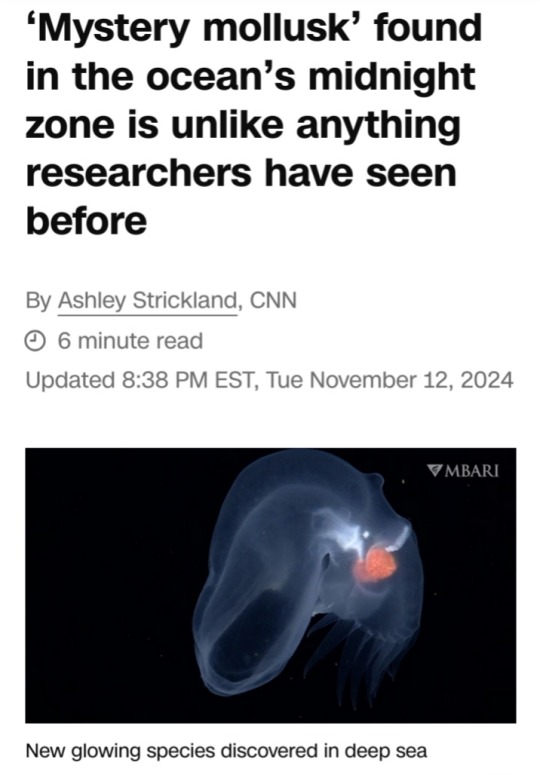
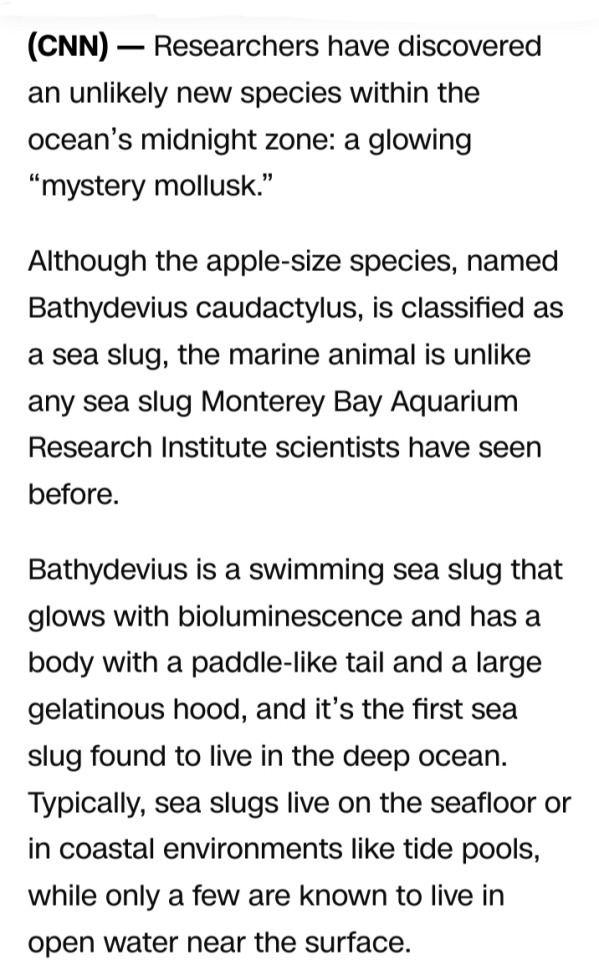

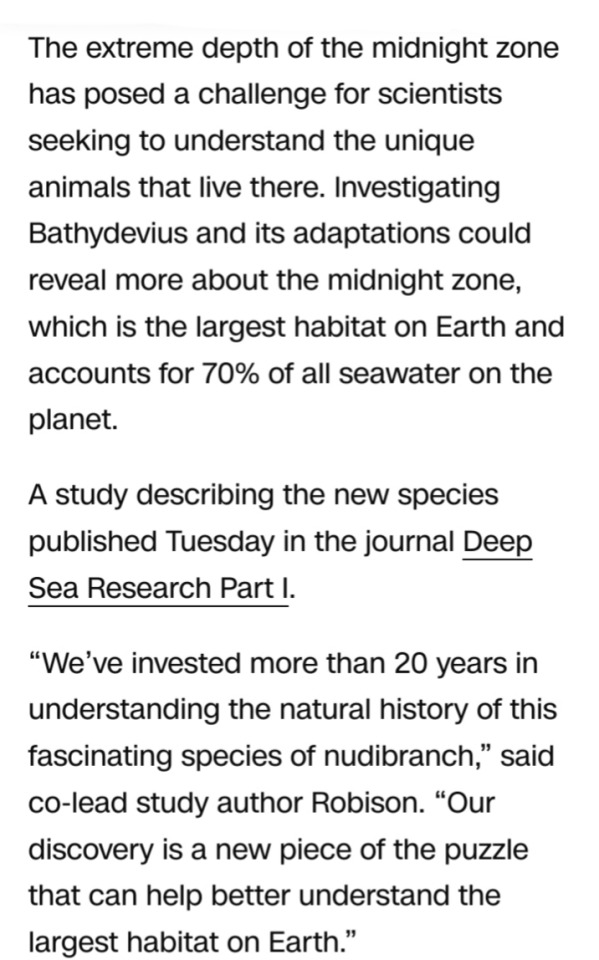

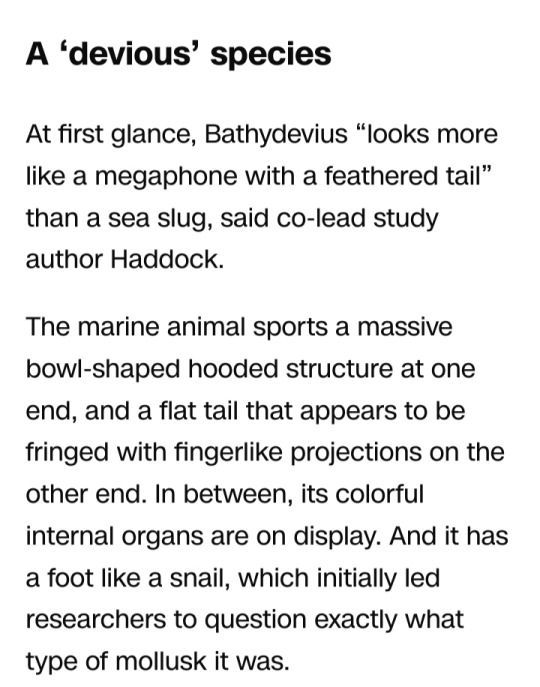



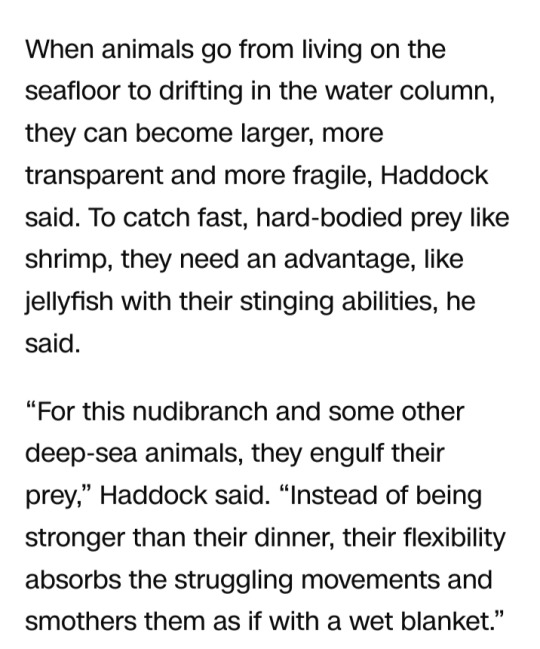
xxx
#mystery mollusk#mollusk#midnight zone#ocean#sea slug#marine animal#Bathydevius caudactylus#Monterey Bay Aquarium Research Institute#bioluminescence#gelatinous hood#deep-water dive#deep-water dive expedition#deep ocean#National Oceanic and Atmospheric Administration#nudibranch#deep water column
18 notes
·
View notes
Text

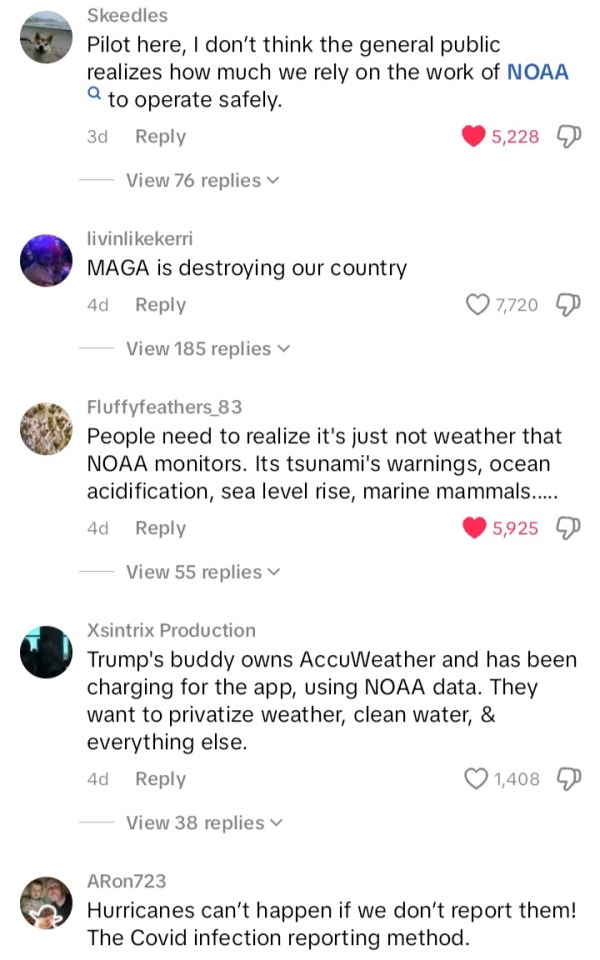
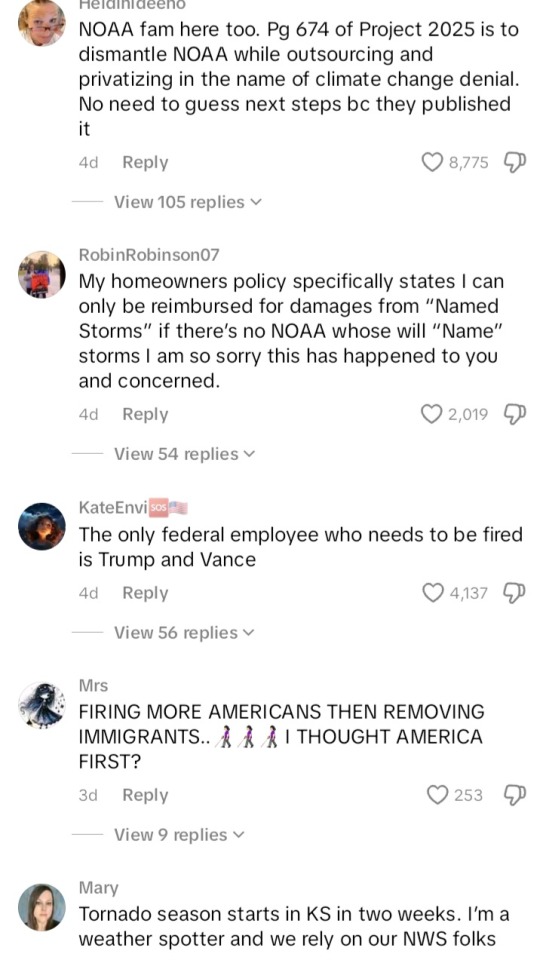



#tiktok#donald trump#fuck trump#noaa#national oceanic and atmospheric administration#federal workers#federal workforce#government employees#government efficiency department (us)#fuck doge#doge#fuck elon musk#fuck elongated muskrat#fuck elon and trump#fuck donald trump#trump can go fuck himself#trump's america#trump's second term#trump is an idiot and so are his voters
21 notes
·
View notes
Text
NOAA layoffs today: 1,000 employees laid off; workforce shrinks by 20%
#noaa#national oceanic and atmospheric administration#federal government#trump administration#government layoffs#us politics
3 notes
·
View notes
Text
"When NWS forecasters can't communicate with Canadian forecasters, things like plane accidents happen." - #AltNOAA
#What NOAA Does#Project 2025 vs. NOAA#DOGE vs. NOAA#Support NOAA#National Oceanic and Atmospheric Administration#disabling NOAA is a bad idea
5 notes
·
View notes
Text
NOAA National Marine Sanctuary Posters
Free for download!

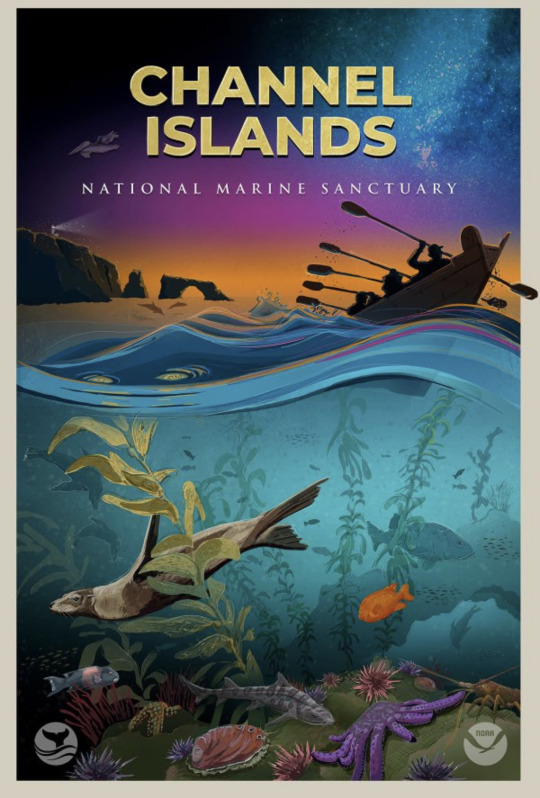



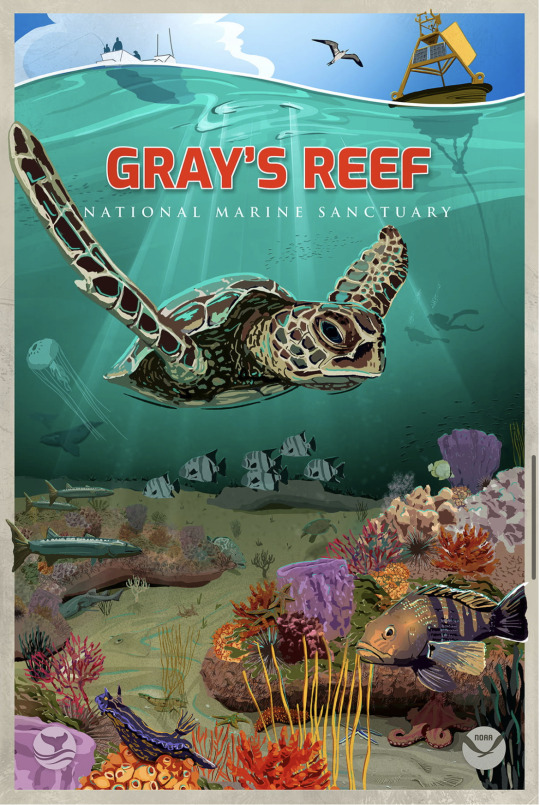


#noaa#national oceanic and atmospheric administration#National marine sanctuary#science art#digital art#art download#free art#science communication
15 notes
·
View notes
Text
Excerpt from this press release from the Center for Biological Diversity:
The Center for Biological Diversity has filed a Freedom of Information Act request that aims to reveal more about the sea life-saving work impeded by Trump’s mass firings at the National Oceanic and Atmospheric Administration.
The filing with NOAA seeks job descriptions and workplans of those fired by Elon Musk’s so-called Department of Government Efficiency. NOAA’s rapid loss of experts is crippling the agency’s ability to protect marine species such as critically endangered whales, sharks, sea turtles and corals.
“The incredible ocean animals that Americans adore are in serious danger as Musk plays power games with hard-working marine scientists,” said Miyoko Sakashita, oceans director at the Center. “Unbelievably, they fired an orca-saving employee of the year, and the public deserves to know what other animals, marine sanctuaries and conservation programs are paying the price for DOGE’s cuts. Getting rid of the experts carrying out important conservation work has devastating and unlawful consequences for both wildlife and people.”
The sweeping DOGE cuts are already hampering agencies’ mandates, though many of the precise harms are unknown.
According to news reports and social media posts, DOGE has fired at least 700 NOAA employees and previously gave buyouts to around 170. Among the many fired experts are the orca-saving employee of the year and the director of an ocean acidification program, both in Washington, a fisheries management specialist assessing salmon stocks in Alaska, a scallop fishery observer in Massachusetts, a meteorologist at the NOAA National Weather Service’s Boston office, an aviating “hurricane hunter” in Florida, and scientists and science communicators around the country.
The agency is also reportedly disbanding two committees related to marine protection: the Marine and Coastal Area-based Management Advisory Committee and the Marine Fisheries Advisory Committee.
NOAA Fisheries is responsible for safeguarding and stewarding the marine species and protected areas off the coasts of the United States. It has jurisdiction over 165 endangered and threatened species, including blue whales, Oceanic whitetip sharks, Chinook salmon, green sea turtles and several species of corals.
23 notes
·
View notes
Text
Dharna Noor at The Guardian:
Climate experts fear Donald Trump will follow a blueprint created by his allies to gut the National Oceanic and Atmospheric Administration (Noaa), disbanding its work on climate science and tailoring its operations to business interests.
Joe Biden’s presidency has increased the profile of the science-based federal agency but its future has been put in doubt if Trump wins a second term and at a time when climate impacts continue to worsen. The plan to “break up Noaa is laid out in the Project 2025 document written by more than 350 rightwingers and helmed by the Heritage Foundation. Called the Mandate for Leadership: The Conservative Promise, it is meant to guide the first 180 days of presidency for an incoming Republican president. The document bears the fingerprints of Trump allies, including Johnny McEntee, who was one of Trump’s closest aides and is a senior adviser to Project 2025. “The National Oceanographic [sic] and Atmospheric Administration (Noaa) should be dismantled and many of its functions eliminated, sent to other agencies, privatized, or placed under the control of states and territories,” the proposal says.
That’s a sign that the far right has “no interest in climate truth”, said Chris Gloninger, who last year left his job as a meteorologist in Iowa after receiving death threats over his spotlighting of global warming. The guidebook chapter detailing the strategy, which was recently spotlighted by E&E News, describes Noaa as a “colossal operation that has become one of the main drivers of the climate change alarm industry and, as such, is harmful to future US prosperity”. It was written by Thomas Gilman, a former Chrysler executive who during Trump’s presidency was chief financial officer for Noaa’s parent body, the commerce department. Gilman writes that one of Noaa’s six main offices, the Office of Oceanic and Atmospheric Research, should be “disbanded” because it issues “theoretical” science and is “the source of much of Noaa’s climate alarmism”. Though he admits it serves “important public safety and business functions as well as academic functions”, Gilman says data from the National Hurricane Center must be “presented neutrally, without adjustments intended to support any one side in the climate debate”.
[...] Noaa also houses the National Weather Service (NWS), which provides weather and climate forecasts and warnings. Gilman calls for the service to “fully commercialize its forecasting operations”. He goes on to say that Americans are already reliant on private weather forecasters, specifically naming AccuWeather and citing a PR release issued by the company to claim that “studies have found that the forecasts and warnings provided by the private companies are more reliable” than the public sector’s. (The mention is noteworthy as Trump once tapped the former CEO of AccuWeather to lead Noaa, though his nomination was soon withdrawn.)
The claims come amid years of attempts from US conservatives to help private companies enter the forecasting arena – proposals that are “nonsense”, said Rosenberg. Right now, all people can access high-quality forecasts for free through the NWS. But if forecasts were conducted only by private companies that have a profit motive, crucial programming might no longer be available to those in whom business executives don’t see value, said Rosenberg. [...] Fully privatizing forecasting could also threaten the accuracy of forecasts, said Gloninger, who pointed to AccuWeather’s well-known 30- and 60-day forecasts as one example. Analysts have found that these forecasts are only right about half the time, since peer-reviewed research has found that there is an eight- to 10-day limit on the accuracy of forecasts.
The Trump Administration is delivering a big gift to climate crisis denialism as part of Project 2025 by proposing the dismantling and privatizing the National Oceanic and Atmospheric Administration (NOAA) and National Weather Service (NWS) in his potential 2nd term.
This should frighten people to vote Democratic up and down the ballot if you want the NOAA and NWS to stay intact.
#Project 2025#Climate Change#Climate Crisis#Weather#AccuWeather#National Weather Service#NOAA#NWS#John McEntee#The Heritage Foundation#Donald Trump#Climate Change Denialism#Office of Oceanic and Atmospheric Research#National Oceanic and Atmospheric Administration#Climate Crisis Denial
88 notes
·
View notes